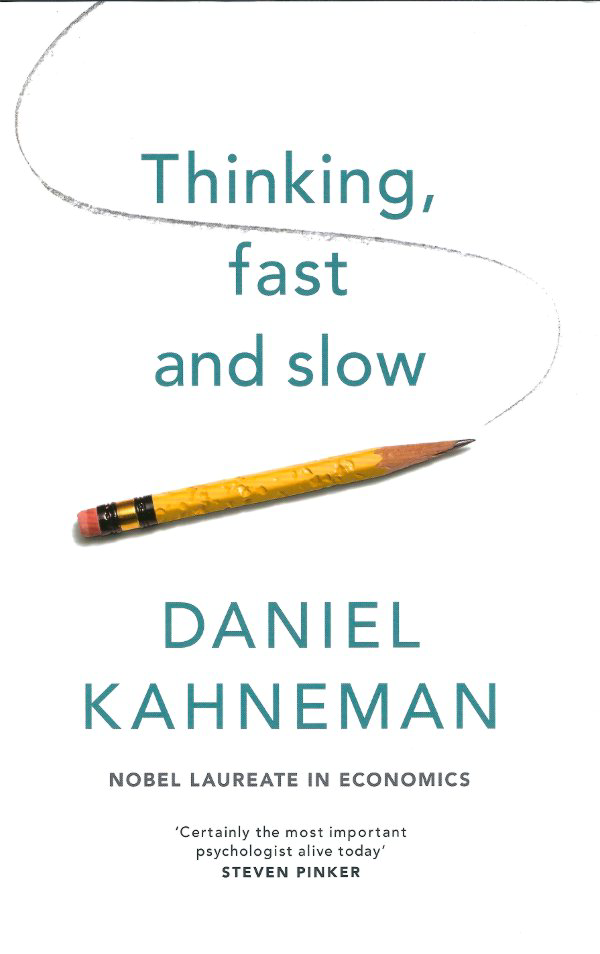Part of the Casswiki article series Books

Thinking, Fast and Slow is a book by Daniel Kahneman, first published in 2011. It describes the human mind in terms of two systems, System 1 and System 2. System 1 does fast, effortless, automatic information processing; System 2 is used during deliberate, effortful mental activities, for example complex calculations – and generally any analytical, step-by-step thinking.
System 1 works by means of unconscious processes, and is also known as the adaptive unconscious, a collection of automatic information processing circuits in the human brain; System 2 is the consciously operated part of the intellect, where each mental step taken is deliberately chosen according to an evaluation.
Most of the time, people are directed by System 1, as System 2 tends to be lazy and to simply accept the suggestions handed to it by automatic processing. In this way, people make intuitive judgments, snap decisions, and come up with quick “solutions” to problems. This “fast thinking” of System 1 has a number of biases and often takes shortcuts. The pitfalls are well-known, and have been explored in detail in Kahneman’s research.
People usually don’t know how they think, and seldom notice the habitual errors they make as they “think” their way through their lives. The weaknesses of automatic, “fast thinking” is furthermore easily exploited by unscrupulous people. This book is important for gaining an understanding of how one’s mind actually works, and knowing what kinds of errors are likely to occur in one’s habitual, mechanical thinking and decision-making.
- Strangers to Ourselves
- [[Redirect (book)|Redirect (book)]]
- You Are Not So Smart
- What Makes Your Brain Happy and Why You Should Do the Opposite
- Brain Changer
External links
- Cassiopaea Forum: Thinking, Fast And Slow (Excerpts and discussion.)
